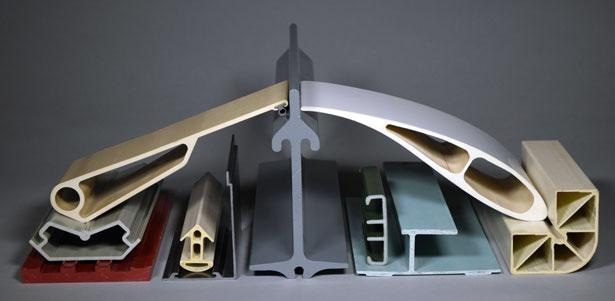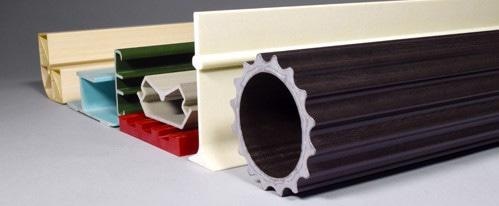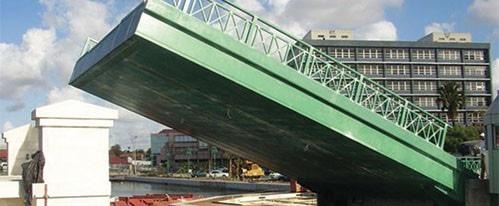 Interview conducted by Mychealla RiceApr 5 2019
Interview conducted by Mychealla RiceApr 5 2019Within the composites industry, Strongwell has been a leader in pultrusion for more than 60 years. Strongwell has had decades-long relationships with entrepreneurs and large companies, both with OEM and aftermarket agreements.
In this interview, Bhyrav Mutnuri, Product Development Engineer at Strongwell talks to AZoM and gives an insight into the way in which custom pultrusions are manufactured after the conceptual stage.
When a custom part is going to be used, what should an entrepreneur share?
The quality assurance manager and engineering manager will review all new inquiries before they are assigned to a process engineer. In a lot of cases, the lack of assumptions or information can lead to concepts being either under- or over-designed.
It is easier for us to meet the functionality and fitness needs of the end-user if we have more information to begin with. Mentioning the types of exposure and environmental conditions the part is likely to endure is also worthwhile.

What are the Critical Features, Tolerances, and Properties?
It is crucial to have a fully-dimensional part drawing. In addition to indicating properties and dimensional tolerances, drawings display the desired features, and their corresponding locations. As process engineers start laying out the composite design, these pieces of information are useful.
Why is it important to Share the Current Manufacturing Material, Such as Aluminum, Wood, Steel, or Thermoplastic Extrusion?
There are always reasons why existing components composed of traditional materials are transitioned into a composite. Corrosion, stiffness, weight, or even abrasion issues may have an impact upon legacy materials. The engineers and designers are problem-solvers and have the knowledge of the existing material that enables us to explore the best ways of achieving the greatest performance and value-to-cost ratio.

How is Pultrusion Impacted by Resin, Color, Environment, or Chemicals?
Two factors which dictate which type of resin should be considered are types of environmental and chemical exposure. These factors also establish whether or not a UV inhibitor is needed. For instance, if a part is exposed to an environment which is especially caustic, we suggest the introduction of a vinyl ester resin due to its chemical resistant properties. In mild environments in which no harsh chemicals are present, polyester resins may be considered.
In either of the above cases, a UV inhibitor would probably be added to the resin mix if the product is situated outdoors or exposed to intense sunlight. The assignment of an RAL number produces colors and prescribes the correct pigment which has to be added to the resin matrix in order to attain consistent color across the part.
Do Mechanical Properties Remain Consistent Throughout Fiberglass Profiles?
A wide range of the various strength characteristics parts are encompassed by mechanical properties. If an entire part, or a portion of it, requires certain strength characteristics, this needs to be noted on the part drawing as indicated previously.
When performing the design work in order to accommodate the specific requirements of the part, knowing the nature of the properties and their desired location makes the process significantly easier. If you are unfamiliar with the strength of pultruded fiberglass, register to view the Strongwell Design Manual in order to achieve a superior understanding of its mechanical properties in our regular shapes.
Is It Possible to Fabricate Custom Pultrusions?
A range of fabrication or secondary operations are able to be accommodated, including drilling holes, cutting slots, precise cuts, and length tolerances or chamfering.

Is It Possible to Subject Custom Parts to Testing?
A range of different tests can be performed at Strongwell’s Quality Assurance lab, depending on the shape’s requested properties and critical features. Generally, requested tests revolve around a variety of physical and/or mechanical properties. They also focus on flammability requirements, whether based on a custom test detailed in the customer specifications or on an ASTM standard.
Are Custom Reinforcements and/or Custom Resin Systems Offered?
Numerous base resin types are available to be considered, including phenolics, epoxies, vinyl esters, and polyesters. As mentioned previously, the main factors influencing the selection of the resin system are the environmental and chemical factors to which the part will be subjected. A number of additives can also be introduced to the resin mix in order to enhance particular capabilities of the part.
There are also different configurations of the reinforcements. Glass rovings are the main component of a pultruded shape, in addition to which there are also stitched mats, continuous strand mats, and numerous other fabrics which can be utilized in order to achieve varying strength characteristics.

Where can our readers go to find out more?
Some entrepreneurs prefer to have the support of a non-disclosure agreement (NDA) prior to discussing projects with us. These types of concerns are handled by our Terms and Conditions team, in order to protect each side during detailed discussions. Ready to submit and discuss an application? Utilize our simple and self-guided Custom Pultrusion Checklist to get started.
To find out more please visit our website www.strongwell.com
About Bhyrav Mutnuri
Bhyrav Mutnuri is a Product Development Engineer for Strongwell, responsible to commercialize new custom fiber-reinforced polymer (FRP) products. Bhyrav holds a Bachelor of Technology in Mechanical Engineering from Jawaharlal Nehru Technological University, and a Master of Science in Mechanical Engineering from West Virginia University. Bhyrav has many years of experience in the composites industry with an emphasis on manufacturing using pultrusion, testing, and mechanical characterization. He is also an active member in several industry and standards committees within the composites industry. Bhyrav works out of Bristol’s corporate headquarters in Bristol, Virginia.
holds a Bachelor of Technology in Mechanical Engineering from Jawaharlal Nehru Technological University, and a Master of Science in Mechanical Engineering from West Virginia University. Bhyrav has many years of experience in the composites industry with an emphasis on manufacturing using pultrusion, testing, and mechanical characterization. He is also an active member in several industry and standards committees within the composites industry. Bhyrav works out of Bristol’s corporate headquarters in Bristol, Virginia.
Disclaimer: The views expressed here are those of the interviewee and do not necessarily represent the views of AZoM.com Limited (T/A) AZoNetwork, the owner and operator of this website. This disclaimer forms part of the Terms and Conditions of use of this website.